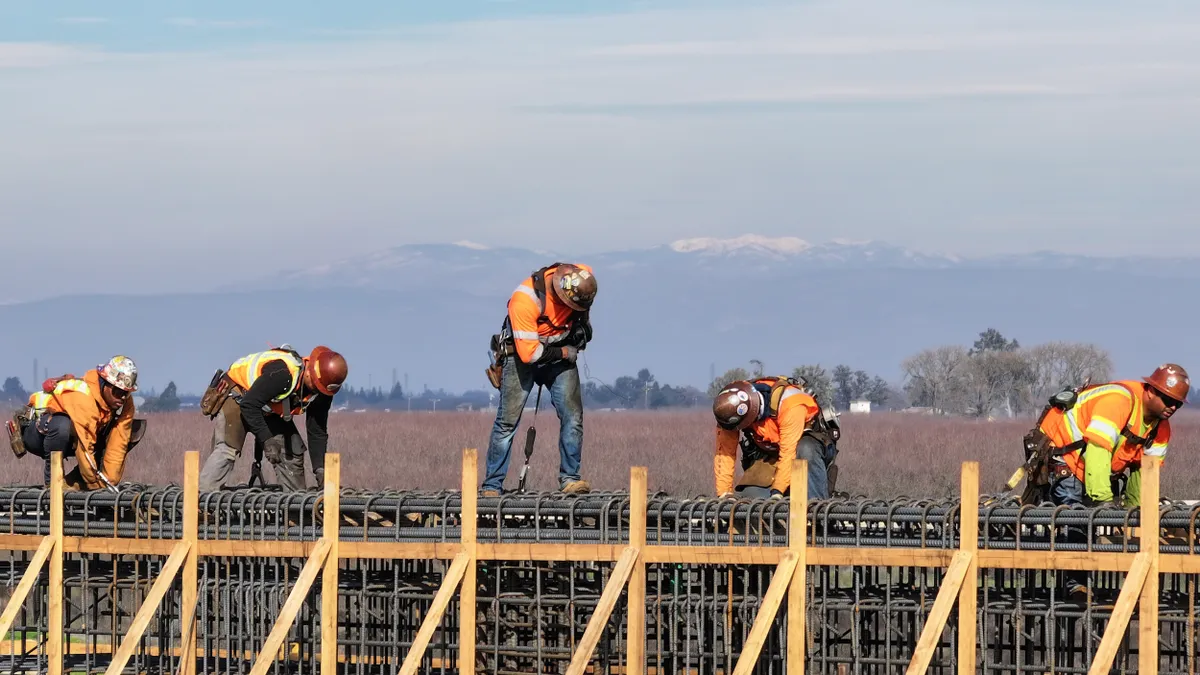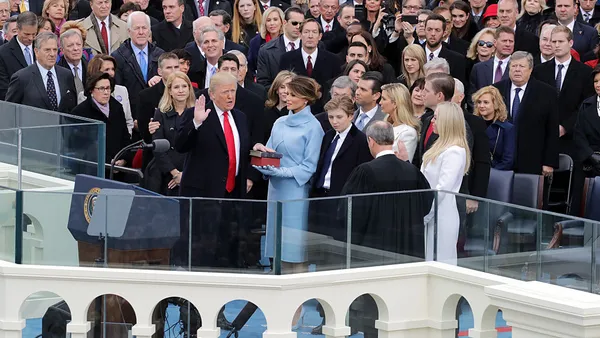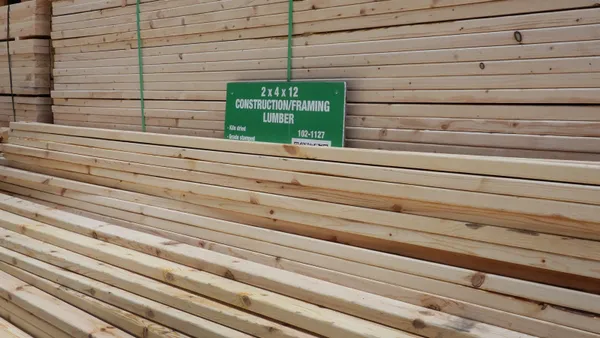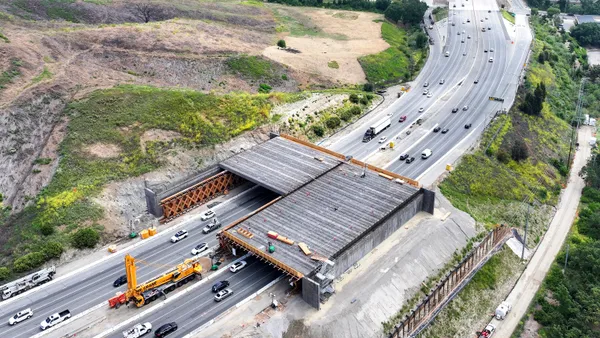Dive Brief:
-
It may be awhile — as much as six months — before U.S. homebuilders feel the full weight of the new, preliminary tariffs imposed on Canadian softwood lumber last week, according to HousingWire, citing a new report by Moody’s Investors Service, because many builders negotiate prices in advance.
-
While speculation prior to the announcement of the duties may have helped some prepare during the first few months of the year, it also contributed toward price increases of 29% for western Canadian softwoods before the duty values were even announced.
- Moody’s calculated that the average 20% countervailing duties could add more than $3,000 to the cost of an average home, or 1% of the total construction cost.
Dive Insight:
The announcement April 24 of a 20% import tax on Canadian softwood lumber ended months of speculation as to how the U.S. would respond to the expiration of the Softwood Lumber Agreement in October 2015. The countervailing duties are the first of two expected penalties; a decision on antidumping duties is due June 23, which could raise prices further.
Builders responded swiftly to the announcement. The National Association of Home Builders called the decision “short-sighted” and stated that it will affect housing affordability. A $1,000 cost increase can eliminate 150,000 potential buyers from qualifying for a mortgage, the NAHB said in a separate report. Analysis by the association also found that the tariffs could cost 8,000 full-time jobs in construction, building material transport and other connected industries.
Meanwhile, Canadian lumber producers are beginning to explore new outlets for their exports, including Asia. Because more than one-third of U.S. lumber supplies come from Canada, a slowdown in supply could also negatively impact housing costs, the NAHB said.
In its Q1 2017 earnings call last week, CalAtlantic, the nation’s fifth-largest homebuilder, said it expects a 5% to 6% increase in some lumber products in Q2 and a similar rise in Q3, noting that they expect to be able to cover the increased costs if the current market trajectory continues. Jerry Carter, a custom builder in Dallas, told Bloomberg earlier this month that rising lumber prices preceding the tariff announcement had already added $4,500 to his material costs.
Lumber producers refuted the NAHB’s claims. In a May 1 editorial in The Hill, Zoltan van Heyningen, executive director of the U.S. Lumber Coalition, called the NAHB’s estimates about jobs and wages baseless, said builders are only concerned about their own profits, and noted that the association cannot indicate how the tariffs will impact home sales or housing starts.
An analyst with Forest Economic Advisors told ProSales magazine that prices may actually drop initially, since the industry had already been raising prices in preparation for tariffs — penalties they had expected to be slightly higher. Farther afield, however, the duties will increase both prices and volatility, FEA said, similar to the impact of previous lumber disputes. The analyst also speculated that buyers may switch their go-to species to U.S. products such as Southern yellow pine, which could drive those prices higher, as well.













